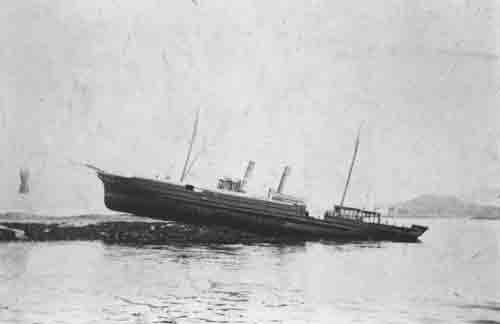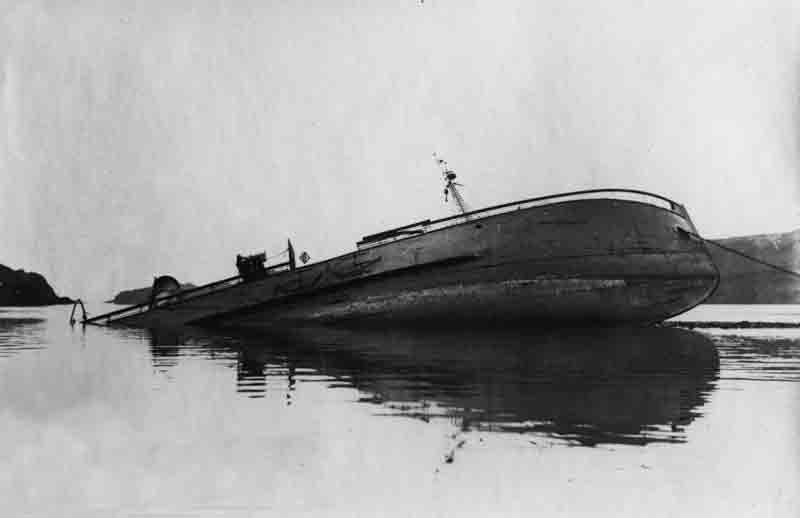Launched on 7th September 1899 from the yard of Robert Williamson in Workington the Gipsy was built for her original owners, the Limerick Steamship Company Ltd. She measured 183.7′ x 27.6′ x 11.2′ and weighed 634 gross tons., 194 net tons. She was powered by a triple expansion steam engine by Ross & Duncan delivering 85 registered horsepower. In 1911 she was sold to J Stewart and Co of Glasgow and then, only a year later to the Ford Shipping Company who renamed her Melford. Only two years later she was sold again to T Steven of Glasgow who renamed her Ardenza before she was acquired by her final owners the Adam Brothers of Aberdeen in 1915 who named her Aulton. She was fitted with a gun for her protection as she continued to ply routes along the east coast of the UK under the constant threat of German submarines and aircraft patrolling there.
On the morning of 23rd March 1918 the Aulton was en route from Seaham to Aberdeen with a cargo of coal and a crew of 13 aboard. In a position 9 mls SExE of Berwick she came under attack by German U-boat UB-83 under the command of Oberleutnant Gunther Krause, an experienced U-boat commander who had taken over command of his boat only a few months earlier. This was Krause’s first attack in his new command. The Aulton was hit without warning by a torpedo from UB-83 and immediately began to sink. She went down within five minutes of the explosion with the loss of two lives, the fireman Alexander Bisset and the cook Alexander Young. The remainder of the crew managed to escape in the ship’s boats and reach shore.
UB-83 quickly made her getaway to avoid attack from any nearby British naval vessels. The Aulton was to be her only success in the war and she was finally sunk by depth charge from HMS Ophelia off Orkney on 10th August later that year, with the loss of all hands.
The wreck of the Aulton lies in the position 55° 46.842’N, 001° 43.792’W oriented 115/295 degrees in a depth of 78 metres with a least depth 71 metres. She is well broken but many recognisable features still the remain. The stern section is the most intact with the rudder, propeller, the large boiler and the rear mounted engine clearly visible. The forward section is more broken and lies almost level with the seabed.




























